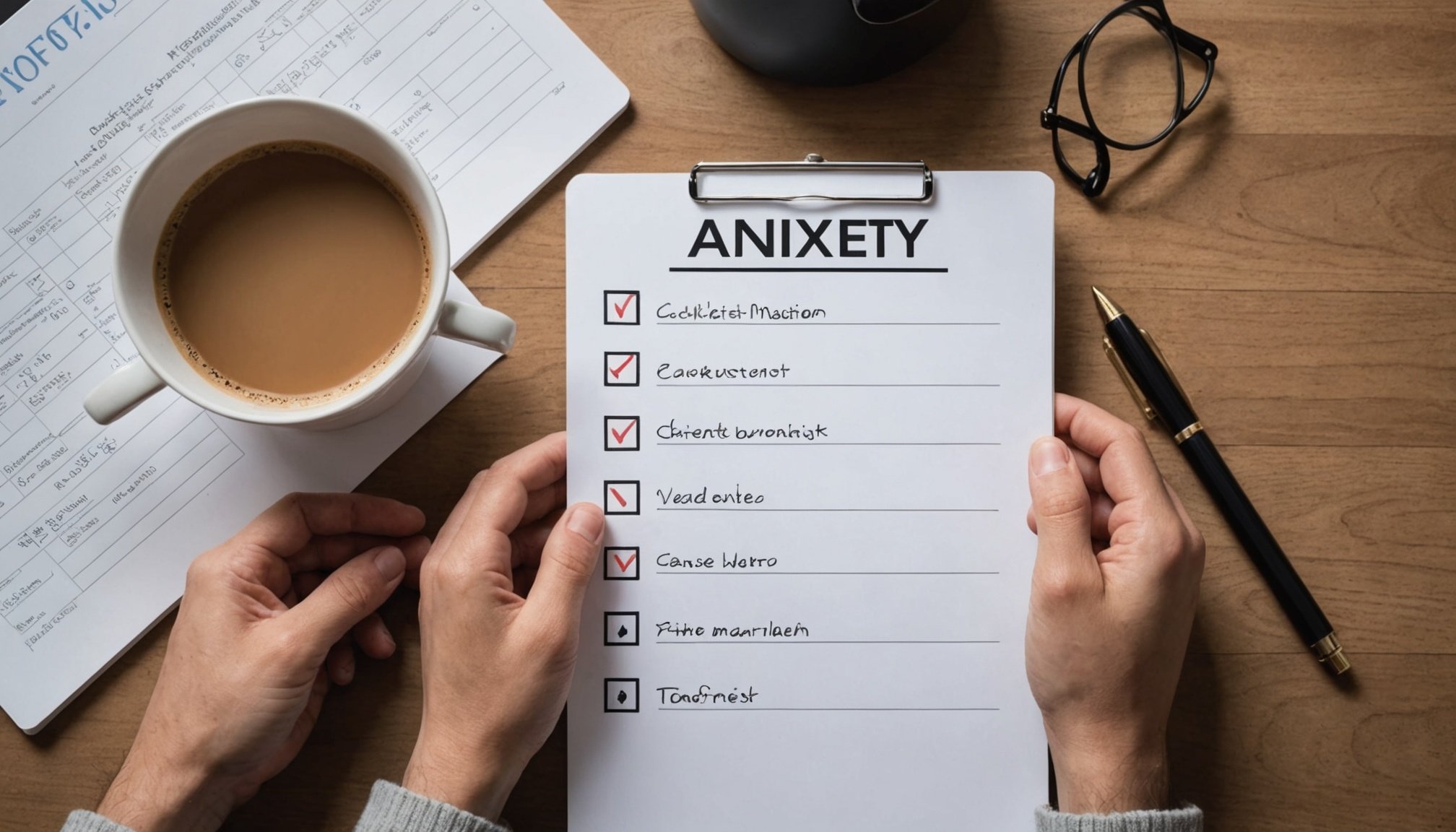Anxiety affects millions, yet many struggle to recognize its symptoms or seek help. This anxiety checklist provides clear, actionable items to assess your feelings, making it an essential tool for self-discovery and management. Included are vital self-assessment questions, coping strategies, and guidance on when to consult a professional. Equip yourself with this resource to better understand your mental health and make informed decisions for your well-being.
Overview of Anxiety Checklists
Understanding and managing anxiety can be significantly alleviated with the aid of organized tools like an Anxiety Checklist. These checklists serve as a structured self-assessment framework, allowing individuals to recognize and evaluate anxiety symptoms efficiently. Engaging in self-assessment is vital in anxiety management, as it helps individuals identify specific symptoms that might otherwise be overlooked.
A découvrir également : What Are the Benefits of Incorporating Pilates into Your Fitness Routine?
There are various types of anxiety checklists available, each designed to cater to different needs. For example, a generalized anxiety disorder checklist focuses on identifying persistent worries, while a social anxiety checklist targets symptoms associated with social interactions. These tools typically consist of actionable items or symptoms to check off, often paired with severity ratings.
Parents might leverage a childhood anxiety checklist to better comprehend their child’s emotional struggles. Conversely, adults might resort to a daily anxiety management checklist or a printable anxiety checklist to track and mitigate symptoms routinely. Such diverse options empower users to select a checklist that best fits their context, fostering control and understanding over their mental health journey.
Cela peut vous intéresser : Crafting a Customized Hydration Strategy for Marathon Runners: Your Ultimate Guide to Optimal Performance
Printable Anxiety Checklists
Features of Printable Checklists
Printable anxiety checklists serve as convenient tools for assessing and managing anxiety symptoms. These checklists often include self-assessment forms that can be used daily to monitor changes and triggers. They are designed to help individuals keep track of their anxiety symptoms, evaluate their intensity, and recognize patterns. Some checklists are tailored for different age groups, such as children or adults, offering specific focus points relevant to each group.
How to Use Printable Checklists Effectively
To make the most of anxiety checklists, individuals should incorporate them into their regular routine. Start by selecting a checklist that suits your specific needs, whether it’s for daily management or periodic evaluations. Consistently noting any shifts in symptoms can provide insightful data points to discuss with a healthcare provider or therapist. Additionally, these checklists often suggest coping strategies alongside symptom tracking, assisting in establishing practical self-care practices.
Resources for Downloading Checklists
For those looking to access printable anxiety checklists, a variety of resources are available online. Websites focused on mental health, such as Anxiety Checklist, offer downloadable PDFs that are both practical and user-friendly. These resources provide worksheets that not only assess anxiety symptoms but also guide users in developing effective management techniques tailored to their lifestyle.
Children’s Anxiety Assessment Tools
Importance of Early Assessment
Early childhood anxiety assessment is critical in identifying potential mental health challenges in children aged 3-10. Early intervention can prevent the progression of anxiety disorders and help children develop healthy coping mechanisms. Understanding and addressing anxiety symptoms early fosters better outcomes for the child’s social and academic development.
Key Symptoms of Anxiety in Children
Anxiety in young children often manifests differently than in adults. Common symptoms include excessive worry, irritability, difficulty concentrating, and physical complaints like stomachaches or headaches. Behavioral signs may involve avoidance of certain activities or social situations, clinginess, and reluctance to attend school. Recognizing these signs allows parents and caregivers to respond appropriately.
Recommended Tools and Resources for Parents
For parents aiming to assess anxiety in their children, utilizing structured tools like the childhood anxiety checklist is beneficial. These checklists often include age-appropriate observable behaviors and symptoms that provide a framework for evaluation. Resources such as the GAD-7, although primarily for adults, can guide understanding of anxiety, while more tailored children’s anxiety assessment tools are available online and through health professionals. Engaging with these tools helps in developing a comprehensive understanding and aids in seeking necessary professional advice.
Coping Strategies and Techniques
Effective Self-Care Practices
Understanding anxiety self-care strategies is crucial for managing mental health. Incorporating regular exercise, maintaining a balanced diet, and ensuring adequate sleep can significantly reduce anxiety levels. Additionally, journaling and creative arts can provide an expressive outlet for emotions, offering relief and clarity.
Mindfulness and Relaxation Techniques
Adopting mindfulness practices like deep breathing, meditation, and yoga can enhance mental clarity and reduce stress. These techniques for anxiety relief promote relaxation and help individuals focus on the present moment, which can alleviate feelings of worry and panic.
When to Seek Professional Help
Despite best efforts with self-care and mindfulness, some may find anxiety unmanageable. Recognizing the signs when professional intervention is needed is important. Consider seeking help if anxiety significantly impairs daily functioning or persists despite trying various anxiety coping strategies. Resources such as the GAD-7 test can assist in evaluating the severity of anxiety symptoms and guide decisions about professional support.
Engaging with professional assessments or joining support networks can provide structured guidance and reassurance. By utilizing self-help tools alongside expert advice, individuals can approach their anxiety management with confidence and hope.






